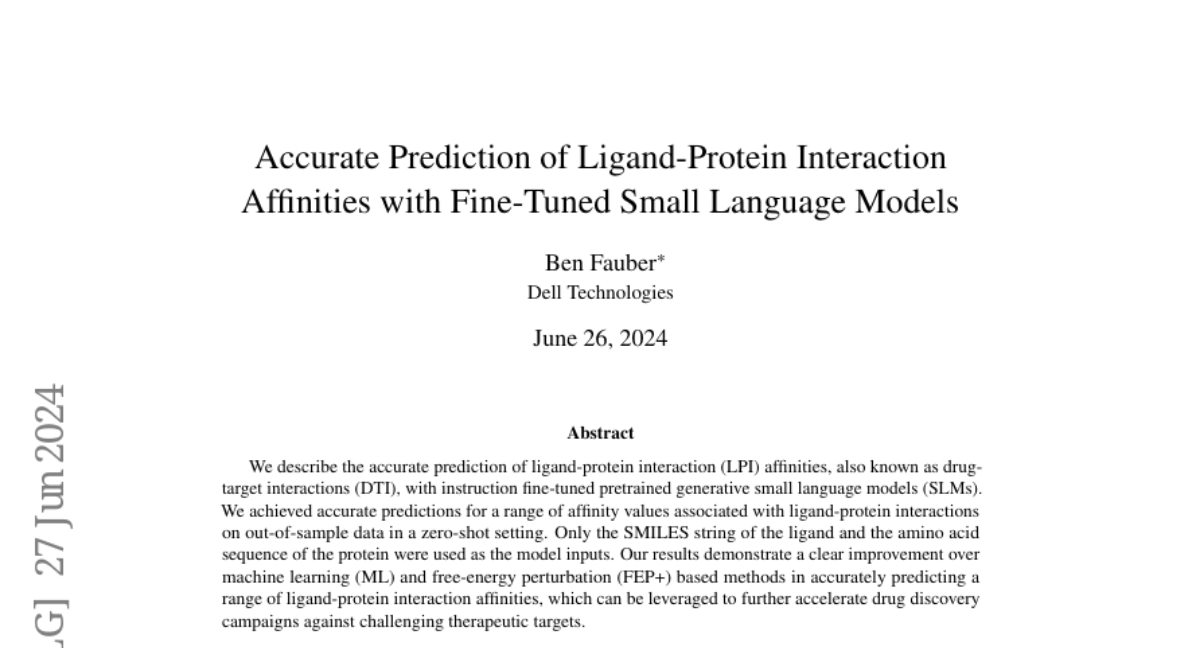Accurate Prediction of Ligand-Protein Interaction Affinities with Fine-Tuned Small Language Models
Ben Fauber
2024-07-02

Summary
This paper talks about using fine-tuned small language models (SLMs) to accurately predict how strongly drugs (ligands) interact with proteins, which is important for drug development. The researchers focused on improving predictions for these interactions without needing extensive prior examples.
What's the problem?
Predicting how well a drug will bind to a protein is crucial in drug discovery, but it can be challenging. Traditional methods often require a lot of specific data and detailed calculations, which can slow down the process of finding new treatments. Many existing models struggle to accurately predict these interactions, especially when faced with new or unseen data.
What's the solution?
To solve this problem, the authors used small language models that have been pre-trained and then fine-tuned with specific instructions. They input simple representations of the drugs (using SMILES strings, which are text-based descriptions of chemical structures) and the proteins (using their amino acid sequences). This approach allowed the model to make accurate predictions about how strongly different drugs would bind to various proteins, even when it had not seen those specific combinations before. The results showed that this method outperformed traditional machine learning techniques and other computational methods in predicting interaction strengths.
Why it matters?
This research is important because it offers a faster and more efficient way to predict drug-protein interactions, which can significantly speed up the drug discovery process. By improving the accuracy of these predictions, researchers can better identify promising drug candidates for diseases, ultimately leading to more effective treatments being developed and brought to market.
Abstract
We describe the accurate prediction of ligand-protein interaction (LPI) affinities, also known as drug-target interactions (DTI), with instruction fine-tuned pretrained generative small language models (SLMs). We achieved accurate predictions for a range of affinity values associated with ligand-protein interactions on out-of-sample data in a zero-shot setting. Only the SMILES string of the ligand and the amino acid sequence of the protein were used as the model inputs. Our results demonstrate a clear improvement over machine learning (ML) and free-energy perturbation (FEP+) based methods in accurately predicting a range of ligand-protein interaction affinities, which can be leveraged to further accelerate drug discovery campaigns against challenging therapeutic targets.